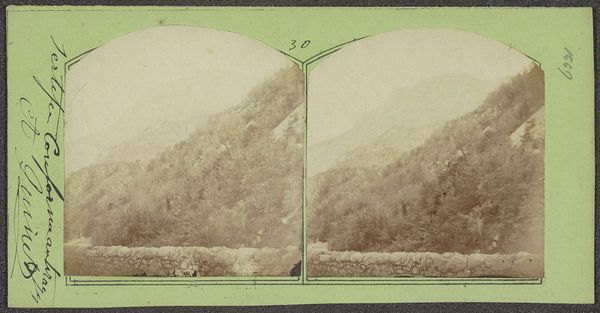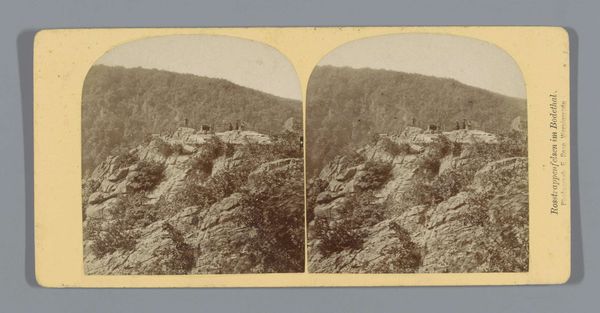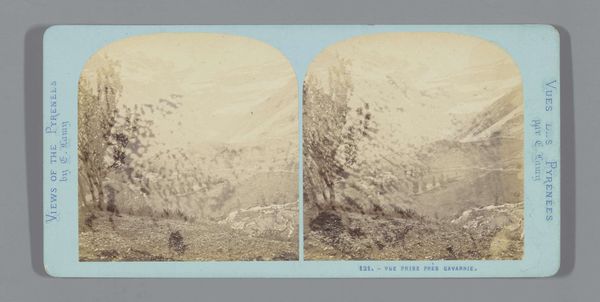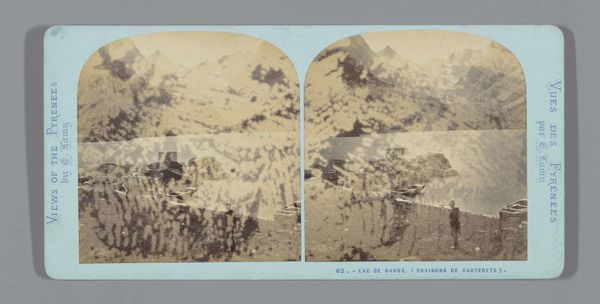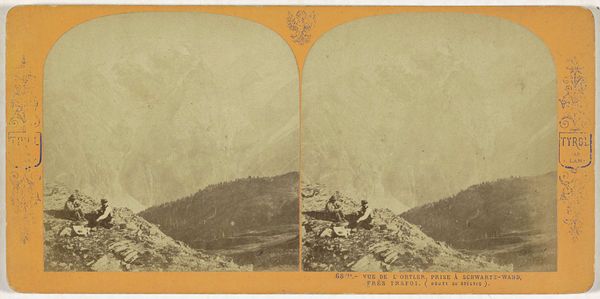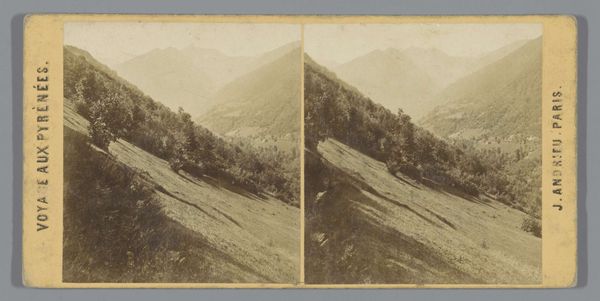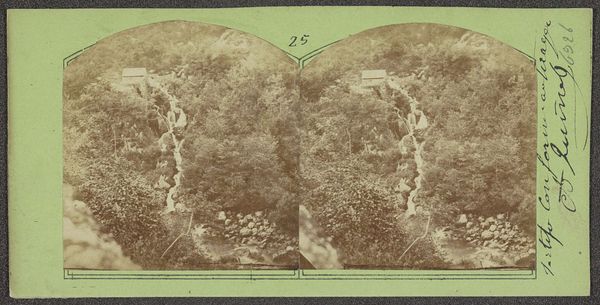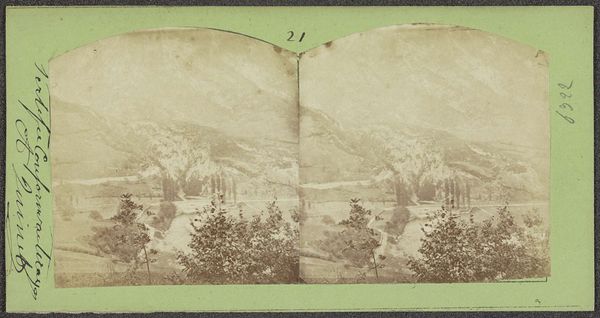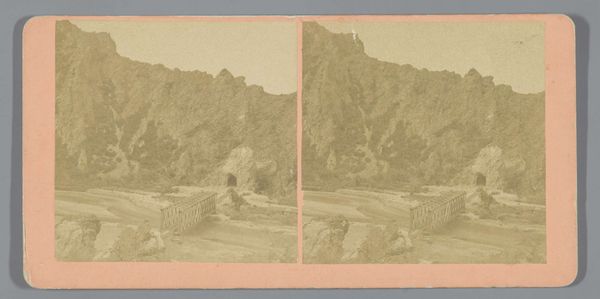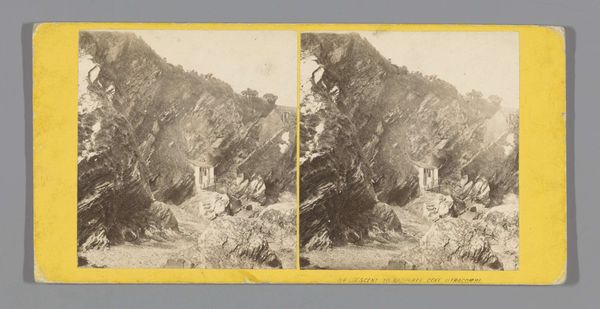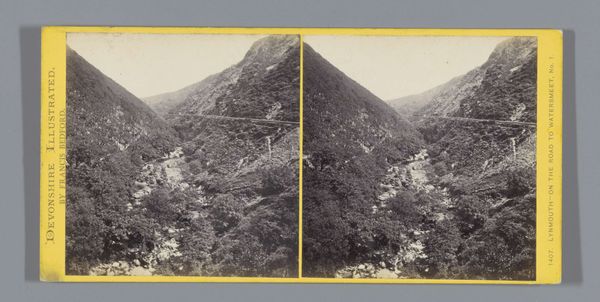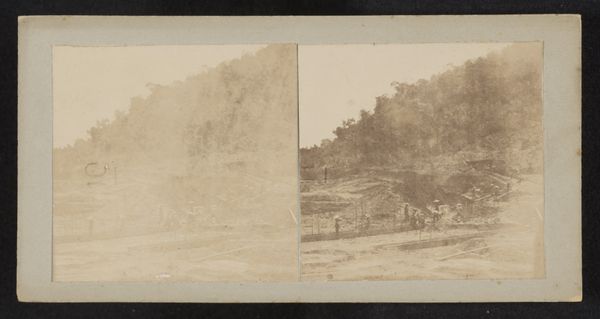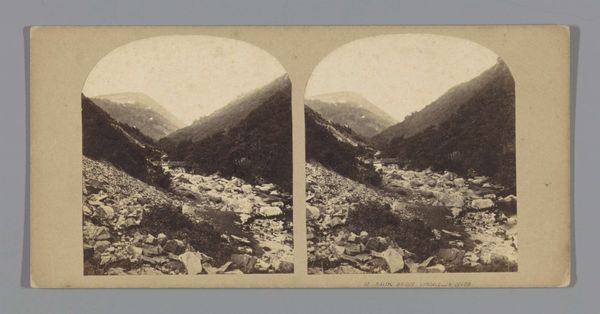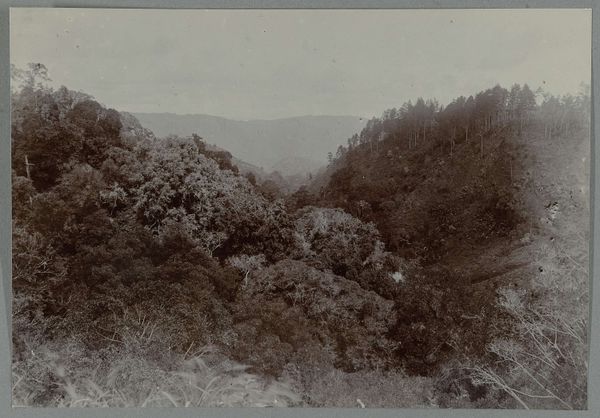
Dimensions: height 85 mm, width 170 mm
Copyright: Rijks Museum: Open Domain
Curator: Let's consider this gelatin-silver print, titled "Gezicht op Watersmeet House te Lynmouth," created sometime between 1850 and 1880. What strikes you initially? Editor: It has a soft, almost dreamlike quality. The light feels filtered, like looking through dense foliage into another time, quite subdued really. There's a distinct layering effect too, like viewing the hills as textiles one on top of the other, each shade adding complexity. Curator: Precisely, and this layering speaks to the Romantic tradition—that idealised view of nature. The photograph’s composition subtly reinforces hierarchies; with the Watersmeet House nestled almost subserviently into the hillside, the landscape has an all-encompassing power. What kind of narratives does that subservience trigger, perhaps related to colonialism and control, nature domesticated. Editor: Or, what sort of industrial processes were at work in gelatin-silver printing that allowed it to become such an expressive tool. You are dealing with some significant labour hours involved to print something on such a large format. Considering what resources were going in—materials like silver, labour to process such photographs and all for what purpose really, perhaps aesthetic but at whose expense? And this particular printing technique – could you consider the social history and processes in play? Curator: That is a fascinating point! And brings another dimension to the conversation; consider too, the concept of "wilderness" being presented in the photographic landscape and the ideologies it advances around class, race, and gender roles, especially in contrast with the social realities and experiences of many in this specific historical period, for instance. It prompts deeper questions, doesn’t it, about who this idealized view of nature actually serves and who it potentially marginalizes? Editor: And where these were intended to be distributed for the end consumer. Thinking about this photograph’s materials and method and the impact they might have had can bring greater awareness of those historical consumption patterns for viewers. Curator: I concur. The interplay here underscores photography’s pivotal role in shaping perceptions and in embedding political and social hierarchies. Editor: Yes, it brings awareness that this print shows both technical proficiency and cultural narrative; making us rethink how to appreciate photographic materials.
Comments
No comments
Be the first to comment and join the conversation on the ultimate creative platform.
